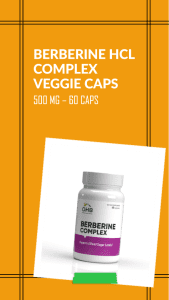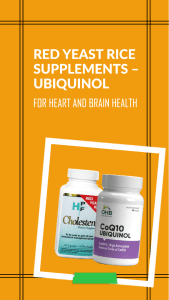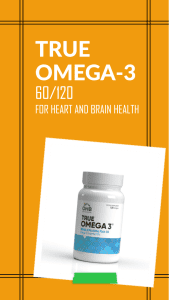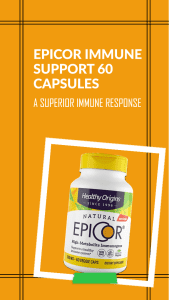
Share
1. Understanding Omega-3 Fatty Acids
Before tossing out your fish oil bottle, let’s talk about why omega-3s are so important in the first place.
What Are Omega-3s?
Omega-3 fatty acids are healthy fats. Your body needs them, but it can't make them on its own. That means you have to get them from food or supplements.
There are three main types:
- EPA (eicosapentaenoic acid): Helps lower inflammation and keeps your heart and joints healthy.
- DHA (docosahexaenoic acid): Great for your brain and eyes. It helps your brain work its best.
- ALA (alpha-linolenic acid): Found in plants like flaxseeds and chia. Your body turns it into EPA or DHA, but not very well.
Why Are They So Important?
Omega-3s help your body in many ways:
- Support brain health and memory
- Keep your heart working well
- Protect your eyes and vision
- Reduce swelling and joint pain
- Help balance your mood and hormones
- Boost your immune system and skin health
- Manage blood fats like triglycerides
- Support healthy blood flow
When you take good omega-3s, they protect your body from the inside out—kind of like invisible armor.
2. What Does “Rancid” Mean in Supplements?
Now let’s talk about something not so fun—rancid fish oil. If your capsule smells super fishy or tastes bad, it might have gone bad.
The Science of Rancidity
Rancidity happens when the oil in the capsule reacts with oxygen. Omega-3s are delicate and can get ruined by heat, light, or air. When that happens, they go through a process called oxidation, which creates harmful compounds and a strong, bad smell or taste.
Think of it like this: your fish oil went outside with no sunscreen. It got burned and now it’s not good for your body anymore.
3 Signs Your Fish Oil Is Rancid
Here’s how to know if your fish oil has gone bad:
- You get fishy burps or a bad aftertaste (you shouldn’t taste the fish at all)
- The oil looks cloudy or the capsules are discolored
- It smells sharp, fishy, or like paint
These are warning signs. If you notice any of them, it’s time to toss the bottle and find something better.
3. Why Many Fish Oil Supplements Go Rancid
The sad truth is many fish oil supplements are already spoiled before you even open the bottle. Here’s why:
- They get too hot during shipping or processing
- The oil comes from old or low-quality fish
- No natural antioxidants (like vitamin E) are added to protect the oil
- They're packed in clear bottles that let light in
- They sit on store shelves for a long time
- They aren’t stored in the right conditions (like cool, dry places)
- They use cheap ingredients or fillers
- Capsules don’t seal the oil well from air
- No third-party testing is done to check quality
- The bottle doesn’t use nitrogen flushing, which helps keep oxygen out
All of this adds up to fish oil that doesn’t help your body and might even hurt it. That’s why at Optimal Health Bridge, we make sure our omega-3s are fresh, tested, and safe before they reach you.
4. Health Risks of Consuming Rancid Fish Oil
A bad smell isn’t the only problem with rancid fish oil. Taking spoiled oil can actually be harmful. Here are some possible risks:
- Increases stress on your cells
- Can damage your DNA and cell walls
- Makes inflammation worse instead of better
- Can cause headaches, nausea, or fish burps
- Might upset your stomach
- Doesn’t help your heart like it should
- May hurt your brain health over time
- Throws off your body's balance of healthy fats
- Interferes with cholesterol and fat levels
- Basically gives you fewer or no benefits
Taking a supplement that’s gone bad is like eating spoiled fish—it won’t do you any good and can make things worse.
5. How to Choose a High-Quality Fish Oil Supplement
You deserve fish oil that’s fresh, clean, and helpful. Here’s what to check for when buying one:
- Look for third-party testing (like IFOS or GOED certifications)
- The label should show what kind of fish is used and how it’s processed
- Cold-pressed or molecular distillation methods keep oil fresh
- Packed in dark bottles that block light
- Includes antioxidants, like vitamin E, to prevent spoilage
- Bottle should be flushed with nitrogen to remove oxygen
- Clear expiration and “bottled on” dates
- Store it right (keep it in the fridge after opening)
- Get oil from clean, sustainable fish sources like sardines and anchovies
- Check what other people say—bad fish oil gets bad reviews
Don't worry if that sounds like a lot. That’s why we do the work for you at Optimal Health Bridge. We only use fresh, clean fish oil and test it often so you get the benefits you expect—without any bad surprises.
Final Thoughts: Don’t Just Swallow Anything
Let’s keep it simple. Omega-3s can help you feel better, think better, and live better. But only if they’re fresh!
Here’s a quick summary:
- Omega-3s are super important for your heart, brain, and whole body
- Lots of fish oil supplements are already spoiled
- Bad supplements can be harmful and won’t do any good
- Watch out for smells, burps, cloudy capsules, or expired dates
- Always choose tested, clean, and well-made fish oil
If you wouldn’t eat spoiled fish, don’t take spoiled fish oil either!
At Optimal Health Bridge, we believe what you put into your body should be pure and effective. That’s why our omega-3 supplements are made with care and tested for quality. Plus, we try to keep things fun—because wellness shouldn’t feel like a chore.
Next time you take your fish oil, smile and remind yourself: you deserve only the best!
– Your friends at Optimal Health Bridge 🐟💪💚
Ready to upgrade your Omega-3 game?
Explore our ultra-fresh, tested, and high-quality fish oil supplements here.
Live well. Live smart. And please… skip the stinky capsules.
✍️ Written with heart by your friends at Optimal Health Bridge
📦 Premium Quality Omega-3s for Heart Health & Vibrant Living










